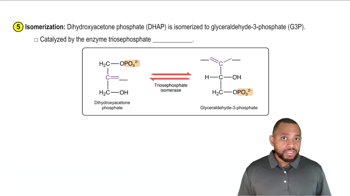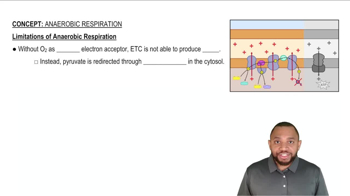How many moles of ATP are generated from the catabolism of fructose (by glycolysis) in
(b) muscle cells?
 Verified step by step guidance
Verified step by step guidance Verified video answer for a similar problem:
Verified video answer for a similar problem:



 2:7m
2:7mMaster Total Energy From Glucose Concept 1 with a bite sized video explanation from Jules
Start learning